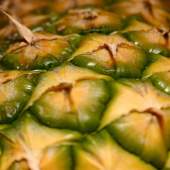Honey

September is National Honey Month, a great excuse to learn more about a remarkably popular, enduring, and versatile product that has quite possibly been around since the dawn of recorded time. Indeed, it is believed that honey was the first sweetener ever used by humans, and the sweetest thing anyone had tasted up to the point it was discovered, leaving fruit in the dust. Today, it’s a good alternative to refined sugar, as it is organic, adaptable to all kinds of uses – medicinal and otherwise – and keeps indefinitely.
Of course, you can’t talk about honey without delving into the honeybee – one wouldn’t exist without the other. A few fun facts about them:
- Bees are the only insect in the world that produces something that is safely edible by humans.
- Over its lifespan, one bee produces a maximum of 1/12 of a teaspoon of honey. (Which is why we need a lot of them to keep our shelves stocked.)
- Bees communicate with other bees by smell (called pheromones), and also by performing a dance. Their wings, on average, beat more than 11,000 times per minute, so “busy bee” is an accurate moniker.
- If you are stung by a bee, chances are the culprit is one of the many worker bees that populate a typical colony (along with drones and the queen bee they serve). Worker bees are by definition female, and will only sting if they consider you a threat. But while bee strings are painful, they are not dangerous unless you are injected with the venom of more than a thousand stings at one time. (Ouch.)
- Beekeepers are also known as apiarists.
- The beeswax from honeycombs has long been a popular component in high-quality candles, in demand because beeswax candles generate far more heat and light than standard paraffin candles, and produce less soot. Beeswax candles are also hypoallergenic, perfect for people who have chemical sensitivities.
- Because it has long been believed that bees have unique and special powers, their likeness has been a popular part of emblems, incorporated into the crests of kings, popes, and the emperor Napoleon, to name just a few.
If we can judge by fossils, bees have been in existence for more than 100 million years and are thought to have originated in Asia. For centuries, the only way to acquire honey (and kudos to the intrepid soul who first tried this) was to tap a hive, or honeycomb, that already existed in the wild. It was likely the Egyptians who came up with the idea of cultivating honey by creating an artificial habitat for bees by using hollowed-out logs or trees. In the mid-1800s, Lorenzo Langstroth, a clergyman with a sideline in beekeeping, created a “collateral hive” that saved untold numbers of bees, as his invention made it possible to extract honey without destroying a hive and its resident colony, as each comb could be lifted out separately. And thank goodness for that, as a dearth of bees would have a disastrous effect on many of our ecosystems.
How is honey made? The National Honey Board provides this explanation:
“Honey starts as flower nectar collected by bees, which gets broken down into simple sugars stored inside the honeycomb. The design of the honeycomb and constant fanning of the bees' wings causes evaporation, creating sweet liquid honey.
“Beekeepers harvest it by collecting the honeycomb frames and scraping off the wax cap that bees make to seal off honey in each cell…the frames are [then] placed in an extractor, a centrifuge that spins the frames, forcing honey out of the comb. After the honey is extracted, it’s strained to remove any remaining wax and other particles.”
What else do we need to know about honey?
- Honey, at about 46 calories per tablespoon, is fine to consume in moderation. Honey is lower on the glycemic index than sugar, and while it is slightly more caloric, it will not raise your blood sugar level as quickly. It also includes vitamins and minerals such as potassium and magnesium.
- One other health benefit of honey: it contains pinocembrin, an antioxidant that can boost brain function. So it could possibly help to make you smarter, something other sweeteners certainly can’t claim!
- Depending on the source of the nectar used to make the honey, it can vary widely in color and taste. As a rule, honey that is darker in color is more flavorful.
- While honey doesn’t freeze (as it doesn’t contain enough water), it can ferment if not stored in a sealed container. Fermented honey is an important ingredient in mead, a tasty alcoholic beverage that has been around since shortly after the Renaissance, and Drambuie, a Scottish liqueur. Honey is also a component in mulled and spiced drinks and some brandies; baked goods such as gingerbread; some jams, jellies, and butters; and some candies and syrups.
- Apart from its culinary uses, honey has also been an important ingredient in furniture varnishes and polishes, and even in cement!
Yes, few substances on earth are more versatile than honey. You can stir it in your tea or yogurt, spread it on a biscuit, drizzle it on your fruit salad, add it to your recipes, take it for a sore throat, and lots more. What’s your favorite use for honey?





